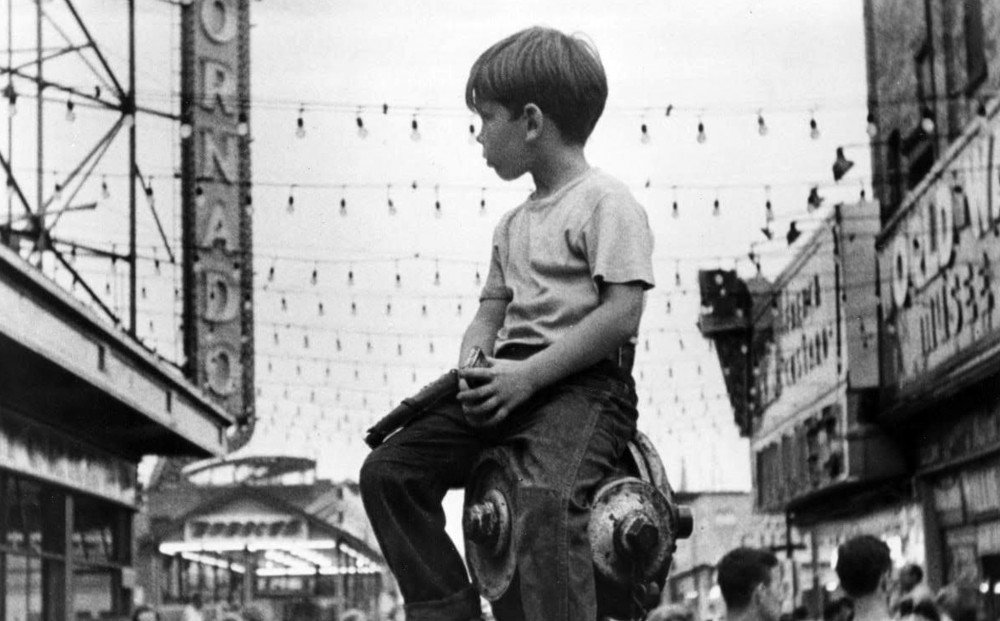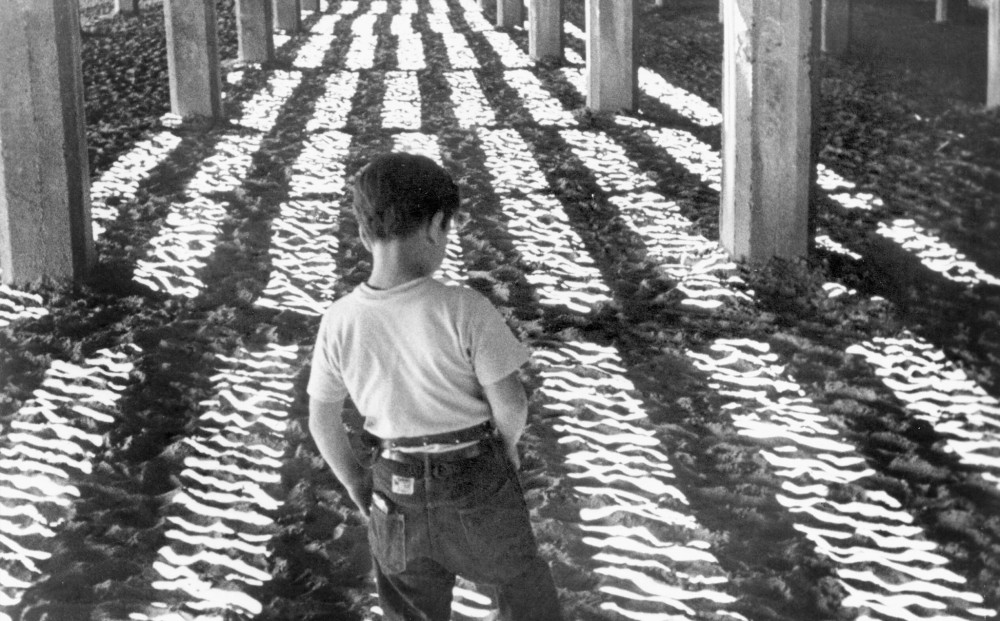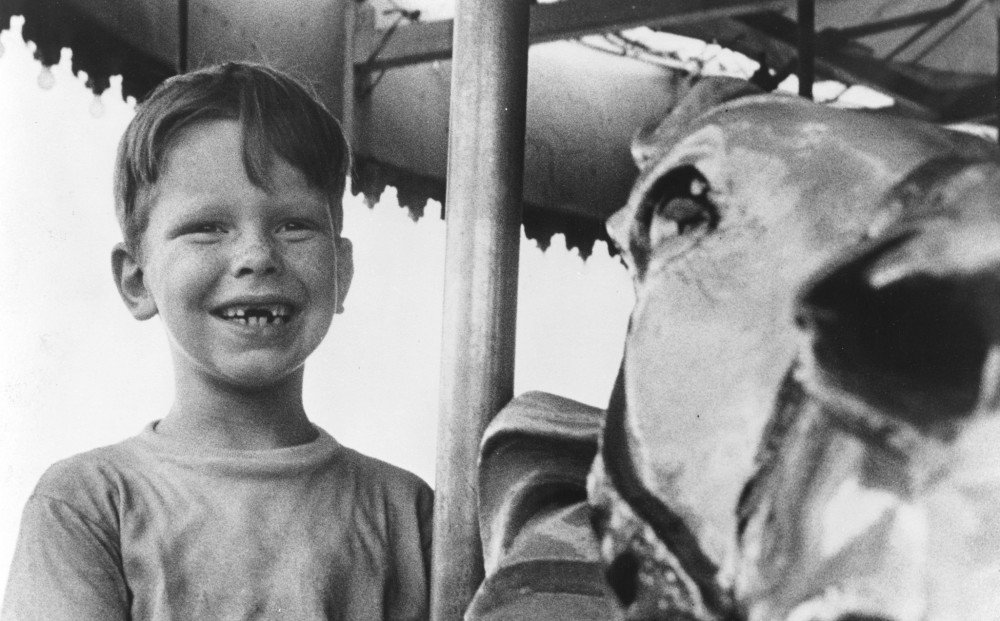LITTLE FUGITIVE
U.S., 1953
Directed by Morris Engel, Ruth Orkin, Ray Ashley
Co-written and Co-produced by Ray Ashley
Starring Richie Andrusco
35mm. Approx. 75 min.
Brooklynite Richie Andrusco’s on the run from the cops after the accidental shooting of his big brother – only trouble is, Richie’s only seven, the “shooting” was just a dumb ketchup-splashed gag by his brothers and cronies, and Mom won’t be back from Grandma’s till the next day. But with six bucks in his pocket and all of Coney Island for a hide-out, how tough can things be, as Richie rides the merry-go-round, takes a cowboy photo, tries out his swings in the batting cage, scarfs down hot dogs, soda, watermelon, and corn on the cob, and gets hooked on the pony ride – he refinances by scouring under the boardwalk for two-cent deposit soda bottles – and even his frantically searching big brother takes a break to ride The Parachute Jump. With a concealed custom-made 35mm camera (which Godard later asked to borrow), legendary photographer Engel – and crew including future wife Ruth Orkin, herself a photography titan – captured unknowing crowds, a phenomenal performance by pint-sized non-pro Richie, and a perfect time capsule of Coney in the waning years of its heyday. Oscar nomination for Best Screen Story; Silver Lion, Venice Film Festival. Co-written and co-produced by Ray Ashley.
Presented with support from the Robert Jolin Osborne Endowed Fund for American Classic Cinema.
Reviews
“Little Fugitive’s simplicity was itself a great part of its appeal: no pointed moral, no dramatic character arc, no allegorical references to corruption, intolerance, World War II, or nuclear disarmament. Instead the audience is led on by the film’s uncanny sense of observation – not just in terms of photographic imagery but in the way ordinary New Yorkers relate to one another, solve their little problems, and go about the mundane details of their everyday lives…the thematic simplicity is echoed by a pared down stylistic approach that makes the average neorealist picture look like a Cecil B. De Mille production. Little Fugitive was shot quickly and cheaply in a bout twenty-one working days between the Fourth of July and Labor Day during the summer of 1952… Guided by a two- or three-page story outline, the filmmakers developed their scenario while they shot the picture, usually a recipe for disaster but in this case a strategy that led to the film’s only Academy Award nomination—for the writing of its original story.”
– Richard Koszarski, “Keep ’em in the East”: Kazan, Kubrick, and the Postwar New York Film Renaissance
“A missing link in the history of modern cinema, a small, unexpected islet, midway between the first wave of Italian neo-realism and the future French New Wave. Between European modernity and the upcoming independent American cinema. Little Fugitive, like Open City, like Breathless, is one of these precarious films which made cinema move in a radical way.”
– Alain Bergala, Cahiers du Cinéma
“Our New Wave would never have come into being if it hasn’t been for Morris Engel’s fine movie Little Fugitive. It showed us the way.”
– François Truffaut



